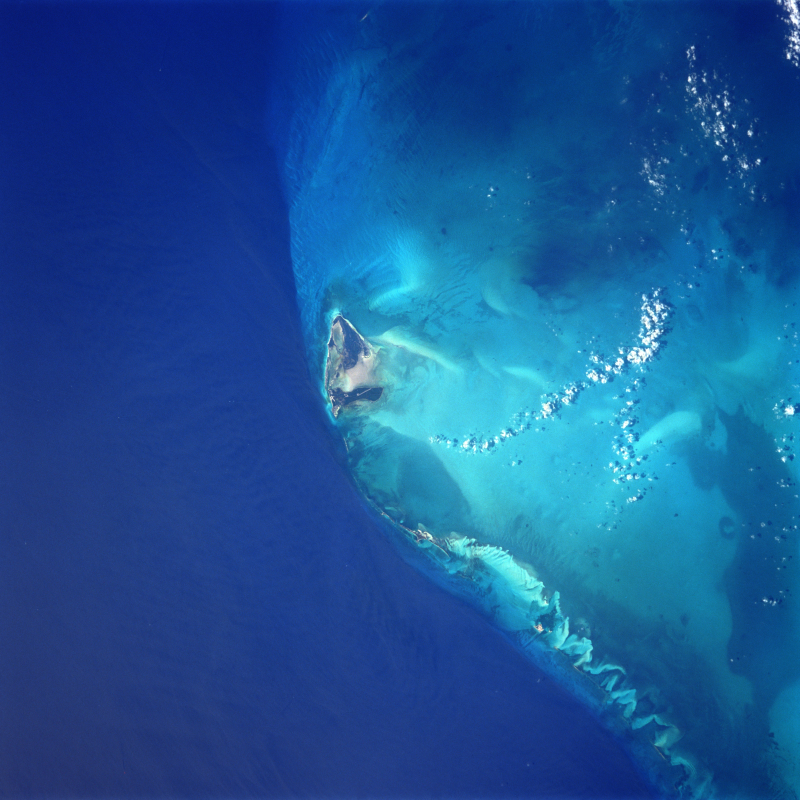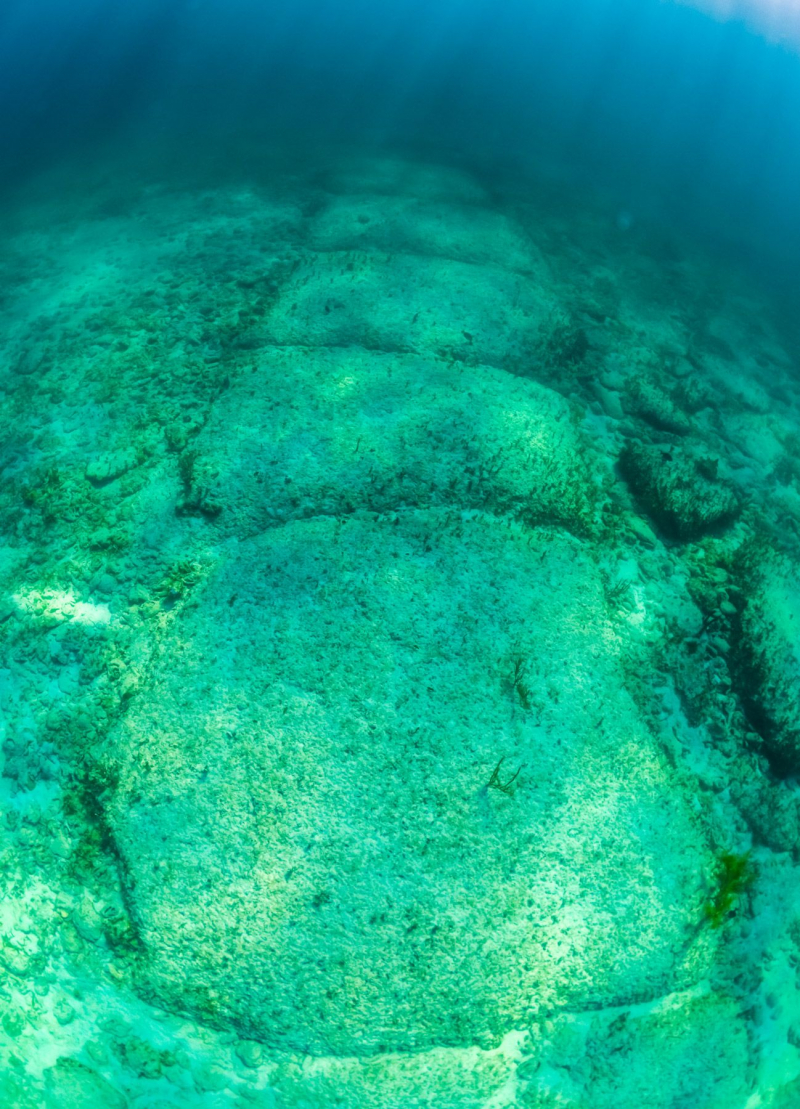Bimini Wall
The Bimini Road, also known as the Bimini Wall, is an underwater rock formation off the coast of North Bimini Island in the Bahamas. The Road is a 0.8-kilometer-long (0.50-mile-long) northeast-southwest linear feature made up of roughly rectangular to subrectangular limestone blocks. There have been several assertions that this feature is a wall, road, pier, breakwater, or other man-made construction. However, convincing evidence or justifications for such an origin are absent.
On September 2, 1968, Joseph Manson Valentine, Jacques Mayol, and Robert Angove were diving in three fathoms (5.5 meters or 18 feet) of water off the northwest coast of North Bimini island when they came across an extensive "pavement" of what were later discovered to be noticeably rounded stones of varying size and thickness. This stone pavement was discovered to create a northeast-southwest linear feature known as the "Bimini Road" or "Bimini Wall." Geologists, amateur archaeologists, professional archaeologists, anthropologists, marine engineers, many divers, and others have visited and examined the Bimini Road. In addition to the Bimini Road, researchers discovered two other "pavement-like" linear features parallel to and shoreward the Bimini Wall.
The Bimini Wall and two shoreward linear features are made up of flat-lying, tabular, rectangular, subrectangular, polygonal, and irregular blocks. The uniformity and rectangularity of the blocks constituting these characteristics are substantially exaggerated in descriptions of the Bimini Road seen in numerous books and articles. The largest of the three linear features, the Bimini Road, is 0.8 km (0.50 mi) long and has a northeast/southwest trend with a prominent hook at its southwest end. It is made out of stone blocks ranging in size from 3-4 meters (9-12 feet) horizontally to 2-3 meters on average (6-9 feet). The larger blocks have complementary edges, which the smaller blocks do not. The two narrower and shorter, roughly 50 and 60 m (160 and 200 ft)-long linear structures lying shoreward of the Bimini Road are made up of smaller tabular stone blocks with maximum horizontal breadths of only 1-2 m (3-7 ft). The bricks that make up these pavements have rounded corners and resemble giant loaves of bread. The blocks are made of "beach rock," which is a limestone consisting of carbonate-cemented shell hash. "Beachrock" is indigenous to the Bahamas. The very rounded structure of the blocks that make up the Bimini Road shows that biological, physical, and chemical processes have eroded a significant thickness of their original surface. Given the extent to which these blocks have been eroded, it is exceedingly unlikely that any original surface features, like tool marks and inscriptions, would have survived.
Although it is usually thought to be a naturally occurring geological feature, others claim that the formation is the remains of an ancient road, wall, or other purposely created feature due to the odd arrangement and shape of the stones. Others who believe the Bimini undersea creation is man-made rather than natural beachrock include naturalist Joseph Manson Valentine, linguist Charles Berlitz, psychologist Greg Little, anthropologist R. Cedric Leonard, and French marine engineer Dimitri Rebikoff.
Location: near North Bimini island in the Bahamas
Depth: 5.5m
Dating: 2000-4000 years old












